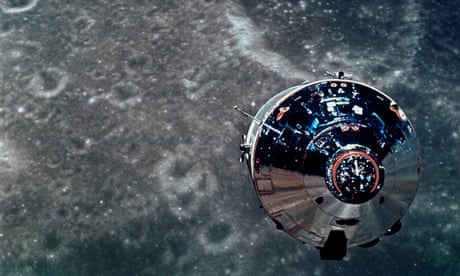
Astronomers are calling for the urgent protection of sites on the moon that are rated the best spots in the solar system for advanced instruments designed to unveil the secrets of the universe.
The prime locations are free from ground vibration, shielded from Earth’s noisy broadcast signals or profoundly cold – making them uniquely well-suited for sensitive equipment that could make observations impossible from elsewhere.
But the pristine spots, known as sites of extraordinary scientific importance (Sesis), are in danger of being ruined by an imminent wave of missions such as lunar navigation and communications satellites, rovers and mining operations, with experts warning on Monday that safeguarding the precious sites was an “urgent matter”.
“This is the first time humanity has to decide how we will expand into the solar system,” said Dr Martin Elvis, an astronomer at the Harvard and Smithsonian Center for Astrophysics in Massachusetts. “We’re in danger of losing one-of-a-kind opportunities to understand the universe.”
At least 22 international missions are expected to touch down on the moon by late 2026, with half heading to sites near the lunar south pole. More will follow, including commercial and civil landers, while two moon bases, one US, the other Chinse and Russian, are expected to be operational in the 2030s.
Without any coordinating authority, there is nothing to prevent future clashes on the moon, the researchers say. The risks range from physical collisions and dust clouds being kicked up by lunar activities to vibrations, electromagnetic interference and damage to sites from drilling and other operations.
The prospect of performing astronomy from the moon was little more than a dream two decades ago, but researchers now have firm plans for instruments, some of which could be installed on the lunar surface by the end of the decade. They include optical, infra-red, X-ray and radio telescopes, particle detectors for investigating the solar wind and cosmic rays, and gravitational wave detectors that sense the subtle shudders in space-time when black holes and neutron stars collide.
The farside of the moon is the most radio-quiet place in the solar system, thanks to the 70bn tonnes of lunar rock that block transmissions from Earth. The conditions make it perfect for radio telescopes to observe the cosmic dark ages, the time before stars, and to search for “technosignatures” of alien life. But the farside is so mountainous, scientists have identified only three sites where large telescope arrays could be installed. One, named Mare Moscoviense, is rich in helium-3, a substance the US startup Interlune wants to mine for quantum computing and fusion energy industries.
Other prime sites are crater bases at the north and south lunar poles that have been shielded from direct sunlight for billions of years. These permanently shadowed regions, or “cold traps”, are among the coldest places in the universe and ideal for large infra-red telescopes that can only operate at temperatures below -200C. Lunar infra-red telescopes could image Earth-sized planets around distant stars and search for signs of life in their atmospheres.
Further spots the astronomers want to protect are cold traps in seismically quiet regions on the moon. The lack of ground vibrations make these ideal for gravitational wave detectors that can sense movements 1,000 times smaller than an atomic nucleus. One idea is to place seismometers in cold traps around the moon to detect how the moon itself quivers when gravitational waves pass through.
Writing in the Royal Society’s Philosophical Transactions, Elvis and Dr Alanna Krolikowski, a political scientist at Missouri University of Science and Technology, said Sesis presented “extraordinary opportunities for astronomical research” but warned that the sites are “rare and fragile.”
Some cold traps contain ice, for example, and are next to “peaks of eternal light” – crater rims and ridges that get sunlight all year – making them prime spots for experiments, moon bases and mining operations that need power, water and oxygen. “The prospect for having competing uses for the same piece of land are pretty large,” said Elvis.
Constellations of satellites that provide communications and GPS on the moon could also wreck astronomers’ plans by interfering with telescopes, while heavy rovers and mining robots could generate dust and vibrations that scupper sensitive experiments, the researchers add.
“We were all caught by surprise with the Starlink satellites becoming so visible,” said Elvis, referring to the impact Elon Musk’s mega-constellations have on the night sky. “We have to get our ducks in line and be able to argue for specific places on the moon to be protected.”